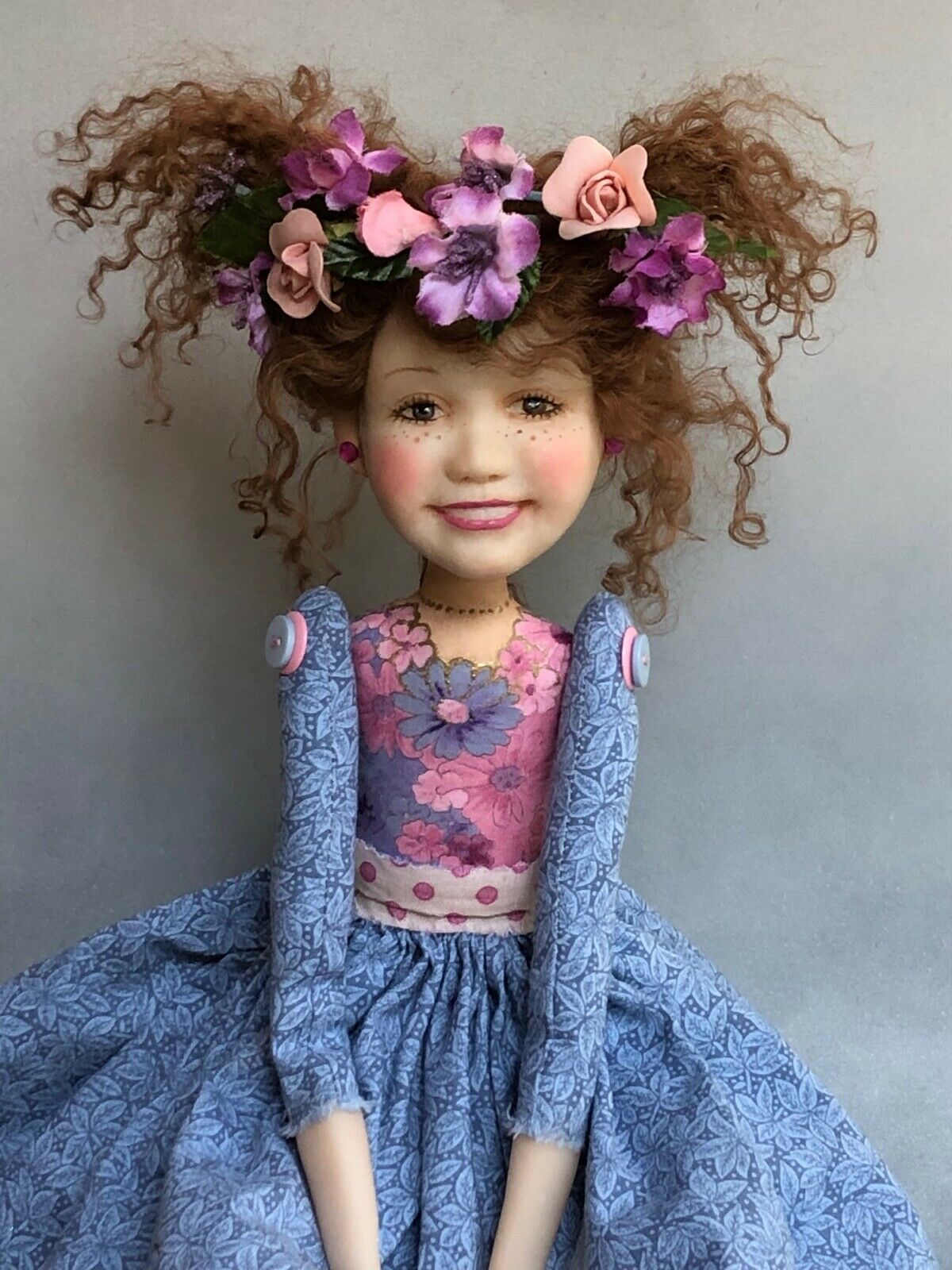-40%
Porcelain BJD "Autumn" Doll OOAK Handmade by Mila Rozenfeld inTsfat Israel 60 cm
$ 792
- Description
- Size Guide
Description
The"Autumn" doll by Mila Rozenfeld, master dollmaker of Tsfat, Israel.
There is also a "Summer" and a "Spring" doll. "Winter" has been sold.
All of Mila'
s dolls are OOAK and completely handmade by her, including
bodies, wigs, clothing and shoes.
"Autumn" is 60 cm / 23.5" high, not including heels of shoes.
There are 14 joints, lined with leather for smooth posing.
The doll is wearing pantaloons and an underskirt as well as her dress,
shoes and hat. All in beautiful detail and warm autumn colors.
She also has a hand beaded purse.
All accessories shown with the doll are included in the purchase price.
More about Mila:
Mila has made nearly 500 dolls in her lifetime, starting with cloth jointed dolls and progressing to the porcelain ball jointed dolls which are on display in A Doll's House museum in Tsfat, Israel, where Mila lives today. Mila is a master of all the skills that go into dollmaking – the sculpting and porcelain casting and firing of the doll’s jointed bodies and their individual and expressive faces; painting their tiny, detailed faces and nails; and making and dressing their wigs. All the dolls’ clothes and shoes are entirely hand sewn, requiring hundreds of thousands of stitches for their construction, beads, sequins, and embroidery. Most of the dolls’ jewelry and accessories are also handmade by Mila. Much of the dolls’ furniture has also been hand painted by her, and she carved the pierced wooden cabinets. Buyers of the dolls receive all the furnishings and accessories displayed together with the dolls.
Background:
Mila was born in far eastern Russia, in Birobidzhan. There she studied fashion design with an emphasis on costume history and received a “red diploma” honoring the highest standard of scholarship. The only jobs then open to her were in factories, which did not appeal, so she stayed in university to study history and obtained a master’s degree. Mila then worked 20 years as a school teacher in Russia.
In Israel:
Mila immigrated to Israel in January 1991 with 2 daughters ages 17 and 21. Settling in Tsfat, she found work with a small cottage industry making biblical dolls. Mila was hired to do and teach the fine needlework that decorated the doll’s costumes. And she learned how to make the porcelain dolls themselves.
Mila’s younger daughter, Ella, was a doll lover and collector, so Mila started to make jointed cloth dolls for Ella’s collection. She made 5 dolls for her, and Ella was then 19 years old, serving her compulsory military army service in Tel Aviv. One day, while at work, Mila heard that there was a terror attack in Tel Aviv, and tried to call her daughter, but there was no answer. She hurried home to sit by the phone; when she arrived the parking lot in front of her home was full of people talking, including journalists. She approached them and asked “What happened?” Immediately everyone turned to look at her and became silent. Mila realized what had happened – her daughter had been killed.
The First Doll Museum:
After her daughter ‘s death, Mila felt compelled to make more dolls, as a tribute to her daughter the doll lover. She began making cloth jointed dolls and progressed to porcelain ball jointed dolls. The City of Tsfat gave her the use of artist’s house “Beit Tziffer” for a museum, where she continued to create more and more dolls and show them to visiting doll enthusiasts. Later she moved her museum to Beit Eshtam where she remained for another 15 years, completing about 300 porcelain ball jointed dolls and selling more than half of them to collectors from around the world. The museum had always been run as an open artist’s studio rather than a business, and finally she was unable to continue keeping it open; it was closed in 2014.
Mila’s dolls today:
Mila took all the remaining dolls home, the 120 that were left unsold of the nearly 500 that she has made in her lifetime. We took it upon ourselves to rent a small space in Tsfat's historic Artist's Quarter to put Mila's dolls back on display and help her sell them. 80 dolls are in the A Doll's House museum collection, where they are also for sale. Another 40 of Mila's dolls are also on display in Rambam hospital in Haifa. Mila wishes to sell her dolls, not leave them in a small and remote museum forever.
She wants the dolls to have homes where they will be viewed and cherished every day.

















